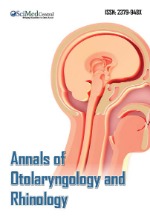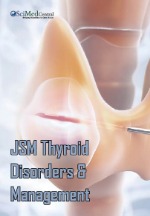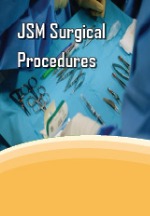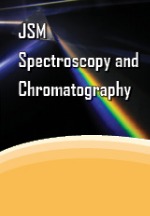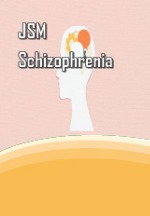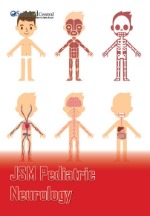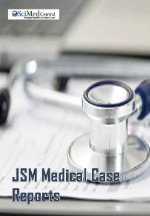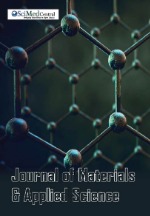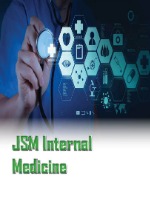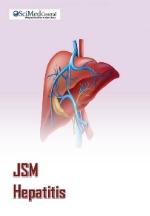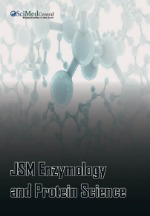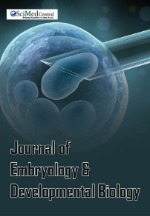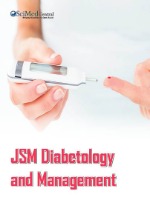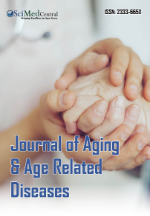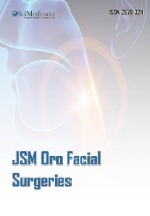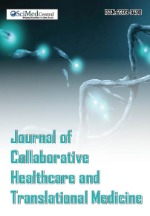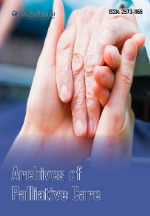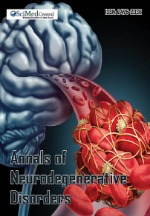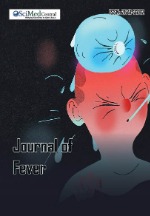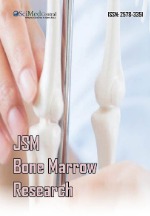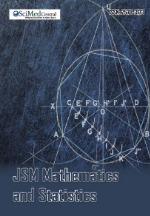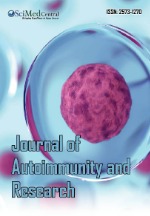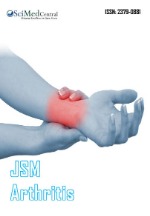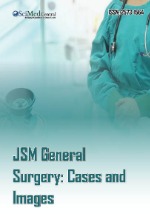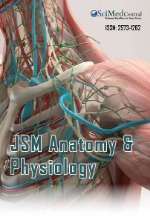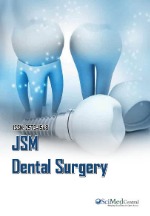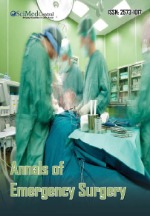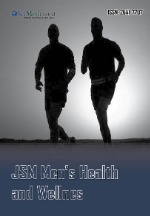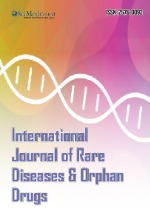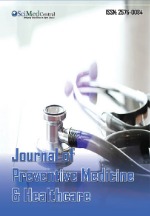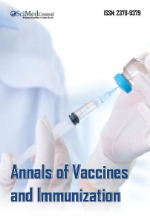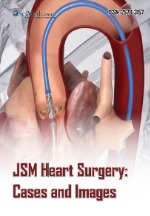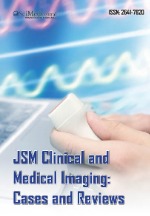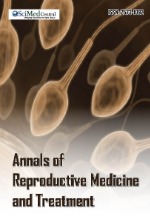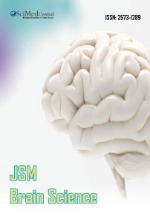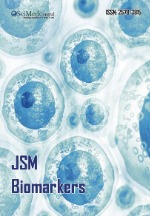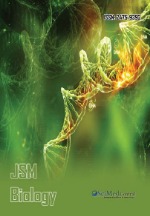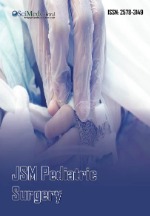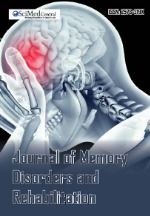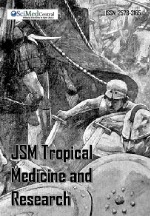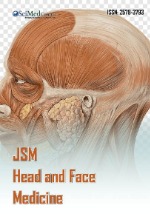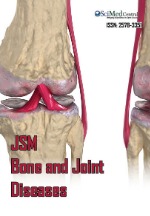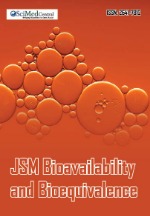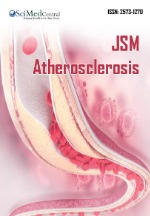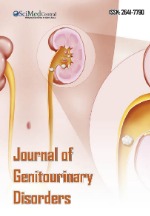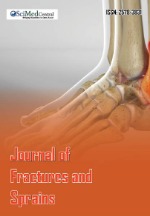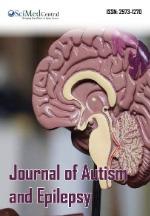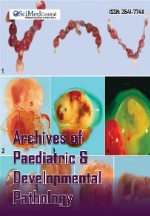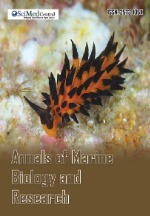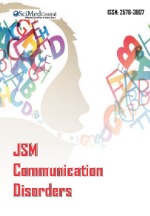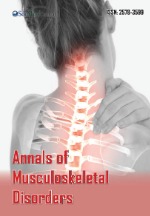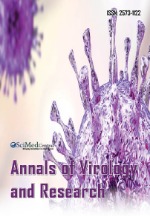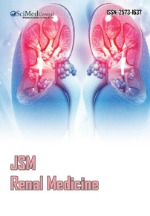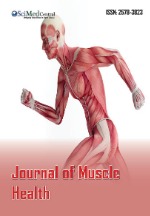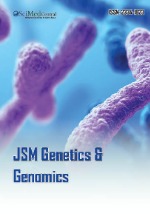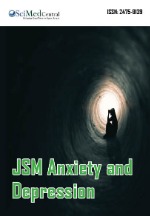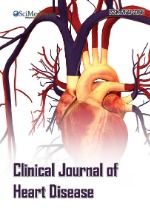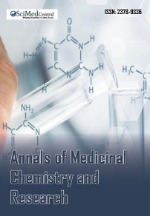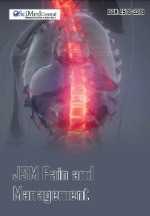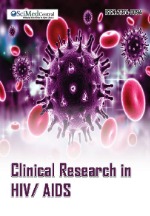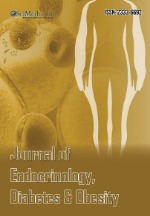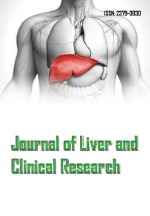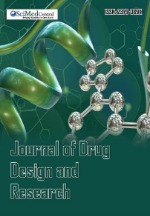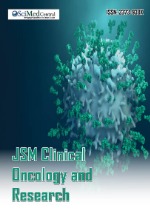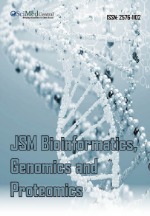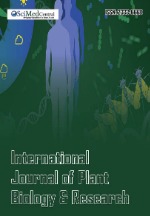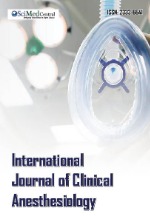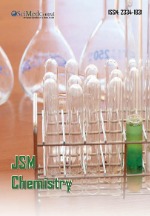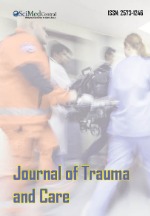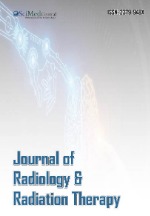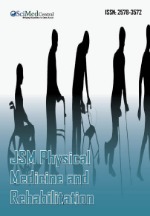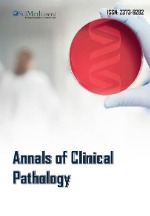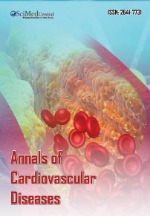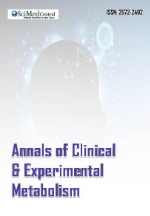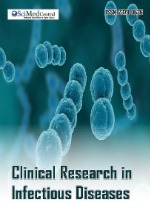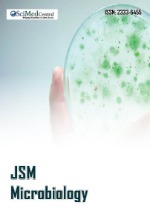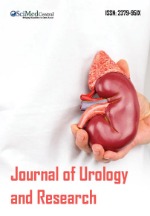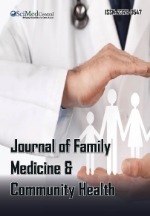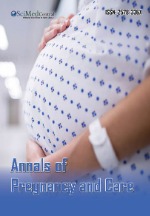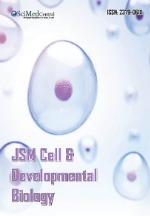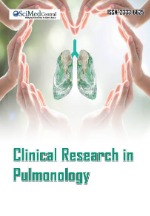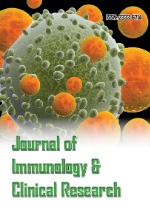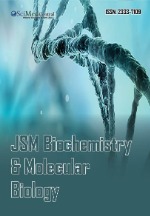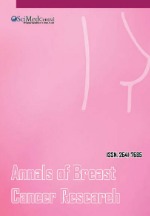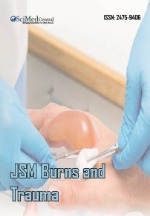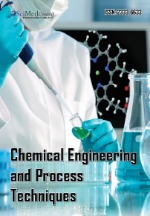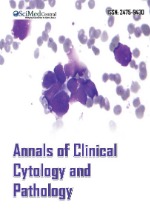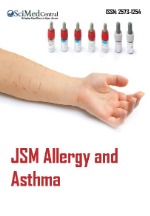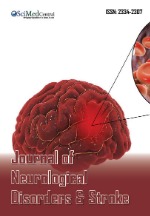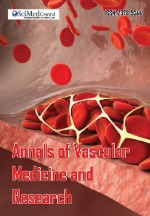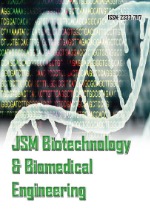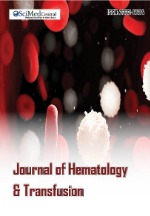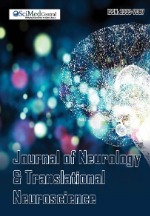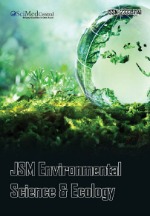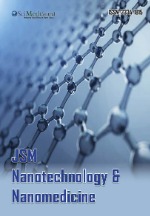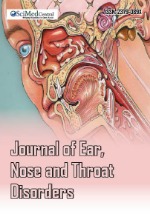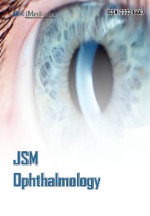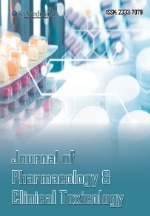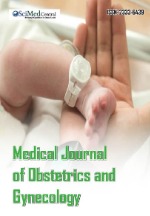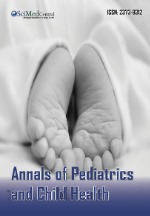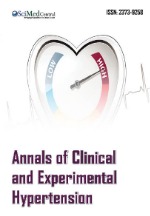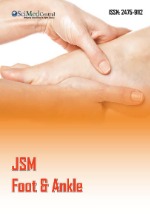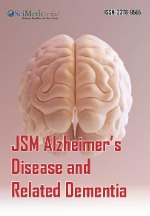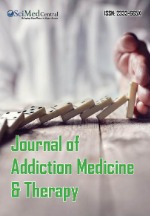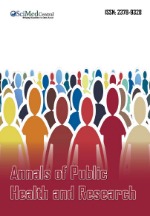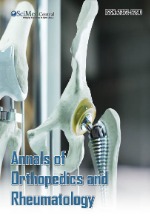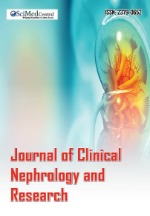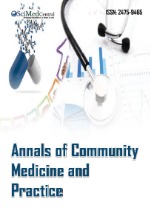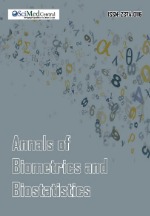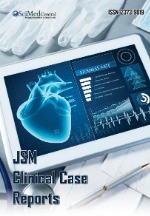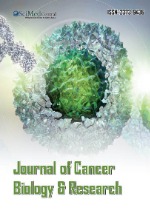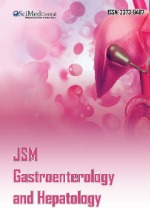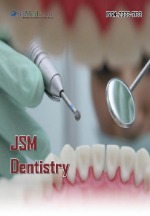Research Progress of Janus Kinase Inhibitors in Treatments of Alopecia Areata
- 1. Department of Dermatology, The Third Hospital of Hebei Medical University, Shijiazhuang, China
Abstract
Alopecia areata is an autoimmune disease characterized by inflammatory and non- scarring hair loss, mediated by CD8+T cells, mainly affecting hair follicles. JAK inhibitors can selectively inhibit JAK, block the STAT signaling pathway, and often interfere with T cell- mediated inflammatory cytokine pathways. They are a class of targeted anti-inflammatory drugs that can promote the activation of hair follicle stem cells. Related studies have shown that JAK inhibitors have generally good efficacy and safety in the treatment of alopecia areata, with fewer serious side effects. This article reviews the mechanism of action of JAK inhibitors in the treatment of alopecia areata, as well as the progress and side effects of representative drugs.
KEYWORDS
- Alopecia areata
- Janus kinases
- Protein kinase inhibitors
- Baricitinib
- Ritlecitinib
CITATION
Sun Y, Zhang Y, Liu Y (2024) Research Progress of Janus Kinase Inhibitors in Treatments of Alopecia Areata. J Dermatolog Clin Res 12(3): 1167.
INTRODUCTION
Pemphigus is not life-threatening but affects the appearance, psychology and daily routine as it may recur or even progress in most patients. Alopecia areata is caused by a number of factors involved and the common theory is that immune mechanisms lead to a breakdown of the immune immunity of the hair follicle. It has been found that stimulatory factors in patients with alopecia areata produce IFN-γ through a positive feedback loop between follicular epithelial cells and CD8+NKG2D+ T cells via the JAK-STAT pathway, which promotes the loss of follicular immune immunity [1]. At the same time, genetic factors [2], hypersensitivity [3-5], gut microorganisms [6] are also strongly associated with the development of baldness. Alopecia areata cannot be cured at present, and the treatment mainly includes drugs, physical and surgical treatments, which are less effective for severe alopecia areata and special types of alopecia areata. Since 2014, foreign scholars have used JAK inhibitors in the treatment of alopecia areata, Atopic Dermatitis (AD) and other chronic inflammatory diseases, and it has been proved to have a definite efficacy [7]. Targeted small molecule inhibitors have a more precise target of action and fewer side effects than conventional immunological drugs. The difference with previous cytokine biologics is that JAK inhibitors can inhibit a range of cytokines, while the former can only inhibit a single cytokine, so the latter is more potent. In this article, we will review the research progress of JAK inhibitors in the treatment of alopecia areata.
MECHANISM OF ACTION OF JAK INHIBITORS
Several pro-inflammatory cytokines involved in the pathogenesis of pemphigus, such as IL-15 and IFN-γ, signal through the JAK pathway [8]. As shown in figure 1,
Figure 1: Schematic diagram of the mechanism of JAK inhibitors for the treatment of alopecia areata.
a). JAK-STAT-dependent immune pathway in pemphigus. This pathway is initiated when follicular epithelial cells present self-antigens to CD8+NKG2D+ T cells via MHC I-antigen complexes and NKG2D/NKG2D ligand complexes and activate CD8+NKG2D+ T cells. Activated CD8+NKG2D+ T cells produce IFN-γ, which binds to the corresponding receptor IFN-γ receptor on follicular epithelial cells, triggering the downstream JAK1/2-STAT pathway. This leads to upregulation of IL-15 and IL-15R α, which in turn binds to activated CD8+NKG2D+ T cells and triggers further upregulation of IFN-γ by the JAK1/3-STAT pathway. These molecular interactions create a positive feedback loop between the two cell types to amplify the inflammatory immune response. b). JAK1/TYK2- and JAK3/TEC-dependent immune pathways. The targets of various JAK inhibitors are indicated in the figure, and the black dashed line with a blunt tip indicates inhibition.
JAK inhibitors specifically inhibit JAK1/2 in hair follicle epithelial cells and JAK1/3 in T cells to inhibit CD8+NKG2D+ T cell activity, inhibit STAT phosphorylation, and thus reduce IL-15 and IFN-γ secretion to slow down loss of hair follicle immune immunity.
Research Progress of JAK Inhibitors in the Treatment of Alopecia Areata
Currently, the first generation of JAK inhibitors are mostly broad type, with wide inhibition surface but poor selectivity, such as Tofacitinib, Baricitinib and Ruxolitinib. The second generation of JAK inhibitors have more precise targets, with narrow inhibition surface but good selectivity, such as Ritlecitinib, which specifically inhibits JAK3, and Abrocitinib, which specifically inhibits JAK1, etc., as shown in table 1.
Table 1: JAK inhibitor-related therapy.
|
JAKi |
Target |
Dosages and/or Effects |
|
Tofacitinib |
JAK1 |
Adult patients ( 5 ~ 10 mg, 2 /day) [9], adolescents 12-17 patients ( 5 mg, 2 /day) [10]. |
|
|
JAK2 |
Children aged 8-10 years (5 mg, 1 /day ~ 5 mg, 2 /day) [11]. |
|
|
JAK3 |
children aged ≤5 years (2.5 ~ 5 mg, 2 /day) [12]. |
|
|
|
Topical 2% tofacitinib [13]. |
|
Baricitinib |
|
Adult patients ( 2 ~ 4 mg, 1 /day) [14]. |
|
|
|
Adolescent 12-17 patients (3.9 mg, 1 /day) [15]. |
|
|
|
Children aged ≤12 years (4 mg, 1 /day) [16]. |
|
Ruxolitinib |
JAK1 |
High dose (20 mg, 2 /day) was effective in 9 out of 12 cases [17]. |
|
|
JAK2 |
Medium dose (30 mg, 1 /day) was effective in 2 cases [18]. |
|
|
JAK3 |
Low dose (10 ~ 25 mg, 2 /day) effective in 5 out of 8 cases [19]. |
|
CTP-543 |
|
Percentage of patients achieving a SALT score ≤20 at week 24 in THRIVE AA-1 (706 patients) [20] :30% in the 8 mg group, 42% in the 12 mg group, 1% in the placebo group. |
|
|
|
Percentage of patients achieving a SALT score ≤20 at week 24 in THRIVE AA-2 (517 patients) [21] :33% in the 8 mg group, 38.3% in the 12 mg group, and 0.8% in the placebo group. |
|
Ritlecitinib |
JAK3 |
Percentage of patients with 30% improvement in SALT score from baseline in ALLEGRO-2a (48 patients) [22] :50% in the rituximab group after 4 weeks (200 mg, 1 / day) + 20 weeks (50 mg, 1 / day). |
|
|
Tec |
Percentage of patients achieving a SALT score ≤20 at week 24 in ALLEGRO-2b/3 (718 patients) [23]: |
|
|
|
31% in the (200 mg+50 mg) group, 22% in the (200 mg+30 mg) group. |
|
|
|
23% in the 50 mg group, 14% in the 30 mg group. |
|
|
|
2% in placebo group. |
|
Brepocitinib |
JAK1 |
Percentage of patients with 30% improvement in SALT score from baseline in ALLEGRO-2a (47 patients) [24] :After 4 weeks (60 mg, 1 / day) + 20 weeks (30 mg, 1 / day) 64% in the Brepocitinib group. |
|
|
TYK2 |
|
|
Abrocitinib |
JAK1 |
Effective options for patients with dual diagnosis of atopic dermatitis and alopecia areata [25–27]. |
|
Upadacitinib |
JAK1 |
|
|
Ivarmacitinib |
JAK1 |
Least squares means of percentage change in SALT scores relative to baseline at week 24 in patients with 25% to 49% hair loss [28] :19.62% in the 2 mg group, 61.97% in the 4 mg group and 52.51% in the 8 mg and 28.68% in the placebo group. |
Tofacitinib
Tofacitinib is often classified as a broad JAK inhibitor, selectively inhibiting the JAK1/JAK3-related pathway. Although it is not currently formally approved for the treatment of alopecia areata, more case series and open studies have shown it to be effective in the treatment of adult and adolescent alopecia areata.
Huang J, et al. [29] found that 80 patients treated with Tofacitinib for more than 6 months had a remission rate of 33.8% at 24 weeks of treatment. In a retrospective study by Benton S, et al. [30] that included 35 patients with alopecia areata, 10 patients (32.3%) achieved almost complete or total scalp hair regrowth. The vast majority of patients in the above study were patients with severe pemphigus, alopecia totalis, or alopecia universalis who were already in the more difficult to treat stage of alopecia areata, which shows the efficacy of Tofacitinib in severe alopecia areata. From retrospective data on 32 long-term Korean patients with moderate-to-severe pemphigus, Park HS, et al. [31] found that 56.3% of patients had a 50% improvement in SALT scores from baseline at a daily dose of 10 mg Tofacitinib and found that duration of Tofacitinib (rather than the total dose) was associated with a favorable response. In addition, Liu L, et al. [9] studied the effect of Tofacitinib in the treatment of 90 cases of severe alopecia areata and variegated alopecia areata, with the majority of patients relapsing within 2 ~ 3 months of stopping the medication suggesting that long term treatment may be required to keep the disease quiescent. Adult patients (5 ~ 10 mg, 2 / day) [9], Adolescent patients (5 mg, 2/day) [10], Pre-adolescent children (5 mg, 1-2/day) [11], Children aged ≤5 years (2.5 ~ 5 mg, 2 /day) [12] had a favorable systemic response to Tofacitinib. Cotton CH, et al. [13] found that 8 out of 11 patients responded to topical treatment with 2 % Tofacitinib, and that hair regrowth in 3 of these cases was cosmetically effective.
Tofacitinib has not been formally approved for the treatment of alopecia areata, but various clinical trials and data, as well as relevant empirical treatments, have demonstrated the drug’s favorable efficacy in patients of different ages or in patients with severe forms of the disease.
Baricitinib
Baricitinib, a reversible JAK1/JAK2 inhibitor, was approved by the U.S. Food and Drug Administration (FDA) and the Chinese National Drug Administration (NMPA) for the treatment of adults with severe alopecia areata in June 2022 and March 2023, respectively.
In one Phase 2 trial and two Phase 3 trials (BRAVE AA-1 and BRAVE AA-2), Baricitinib efficacy continued to improve over 52 weeks. The two Phase 3 trials enrolled 654 patients and 546 patients each, and of the patients treated with Baricitinib 4 mg and 2 mg, respectively, 40.9% and 21.2% in the BRAVE AA-1 group and 36.8% and 24.4% in the BRAVE AA-2 group achieved a SALT score ≤20 at week 52 [14]. Fung S, et al. [32] Baricitinib was evaluated for hair regrowth in more patients with ≥80% scalp hair coverage compared to placebo, and common adverse events included infection, headache, acne, and elevated blood creatine phosphokinase. In addition, Asfour L, et al. [16] A retrospective longitudinal cohort study was conducted to evaluate the safety and efficacy of Baricitinib in the treatment of patients with alopecia areata under the age of 12 years, and 19 subjects showed a mean reduction of 68% in SALT scores after treatment with a mean daily dose of 4 mg Baricitinib. Moussa A, et al. [15] Twenty- nine adolescent (12-17 years of age) patients with moderate-to- severe alopecia areata were reviewed, and 23 patients (79%) achieved partial or complete scalp hair regrowth using a mean final dose of Baricitinib of 3.9 mg daily. Baricitinib currently appears to have a more favorable benefit-risk ratio compared to treatment options available for the treatment of alopecia areata (particularly systemic immunosuppressants) [33,34].
Ruxolitinib and Deruxolitinib
Ruxolitinib specifically inhibits the JAK1/JAK2-related pathway, and although it has not been formally approved for the treatment of alopecia areata there have been a number of successful case studies and reports in recent years.
In the high-dose group [17] (20 mg, 2/day), 9 out of 12 patients with moderately severe pemphigus showed effectiveness; in the medium-dose group [18] (30 mg, 1/day), both patients with severe pemphigus (one patient with chronic pemphigus and one patient with acute episodes of pemphigus) showed effectiveness; and in the low-dose group [19] (10 to 25 mg, 2 / day), out of 8 patients with severe pemphigus 5 cases showed effectiveness. In a phase 2, double-blind, controlled trial, there was no statistically significant difference in the trend of SALT scores between the experimental and control groups after topical application of ruxolitinib cream [35]. The results suggest that ruxolitinib is effective orally, but topical use has no significant effect in patients with alopecia areata. It was also found that hair regrowth was not sustained after discontinuation of ruxolitinib, and some patients even lost hair. Delaying discontinuation and tapering the dose may help maintain hair regrowth [18]. In addition, the role of ruxolitinib in protecting hair follicles by affecting immune effectors and inhibiting the downstream effects of IFN-γ signaling has been demonstrated by an in vitro hair follicle culture model [36].
Recently, a deuterated form of ruxolitinib has been developed, called deuterated ruxolitinib (deuruxolitinib). Deuterium-substituted drugs are obtained by replacing one or more Carbon-Hydrogen bonds (C-H) with Carbon-Deuterium bonds (C-D) at specific metabolic sites in the drug molecule. This substitution extends the drug half-life, reduces the production of toxic metabolites and drug-drug interactions, lowers the administered dose, improves safety, and results in better efficacy. In a phase 2, double-blind, placebo-controlled trial involving 149 participants, patients treated with 8 mg or 12 mg deuterated ruxolitinib experienced a significant reduction in the severity of pemphigus. One of these patients experienced a serious adverse reaction of grade 3 cellulitis with sinus congestion, sinus infection and influenza [37]. To further assess the efficacy and safety of deuterium-generated ruxolitinib, two large-scale studies were conducted, enrolling 1,223 patients, namely, THRIVE AA-1 and THRIVE AA-2. In the THRIVE AA-1 study, the proportions of achieving a SALT score of ≤20 in the 8 mg group, the 12 mg group, and the placebo group were 30%, 42%, and 1%, respectively; in the THRIVE AA-2 study, these proportions were 33%, 38.3%, and 0.8%, respectively. It is anticipated that deuterated ruxolitinib is likely to be approved for the treatment of adult patients with alopecia areata [20,21].
Ritlecitinib and Brepocitinib
Rituxetinib is an irreversible, selective JAK3/TEC kinase inhibitor. It selectively inhibits JAK3 because it irreversibly covalently binds to the Cys residue at position 909 of the catalytic structural domain, whereas in other JAKs the residue at this position is replaced by a serine. Members of the TEC kinase family have a Cys residue at the same position as JAK3, and are therefore also inhibited by ritlecitinib. In the cellular environment, ritlecitinib inhibits the cytolytic activity of natural killer cells and CD8+ T cells and the production of IFN-γ by inhibiting TEC kinase family members [38].
Ritlecitinib was approved by the FDA and NMPA in June 2023 and October 2023, respectively, for the treatment of severe alopecia areata in adolescents and adults 12 years of age and older. It is the second JAK inhibitor approved for the treatment of alopecia areata after baricitinib and the first approved for the treatment of adolescent alopecia areata patients. Compared to other JAK inhibitors, ritlecitinib offers a new mechanism of action with a rapid onset of action and a high safety profile. In the ALLEGRO-2a trial, approximately half of the 48 patients with alopecia areata who had more than 50% scalp hair loss showed a 30% improvement in SALT scores from baseline after 24 weeks of oral ritlecitinib, demonstrating good efficacy and safety [22]. In the randomized, double-blind ALLEGRO-2b/3 trial, ritlecitinib was well tolerated in 718 adult and adolescent patients with severe alopecia areata, with approximately 22-31% achieving a SALT score ≤20 at week 24 [23]. Blair HA, et al. [39] analyzed data from selected ALLEGRO-2b/3 and ALLEGRO-LT trials and concluded that ritlecitinib has clinically meaningful and sustained long-term efficacy in patients with alopecia areata. King B, et al. [40] evaluated the ALLEGRO series of trials and found that ritlecitinib was well tolerated by patients with alopecia areata. Common adverse reactions included headache, positive new coronavirus tests, nasopharyngitis, acne, and upper respiratory tract infections, among other milder symptoms.
Brepocitinib (PF-06700841) selectively inhibits TYK2 and JAK1 channels. Although brepocitinib is not yet approved, studies have shown significant efficacy. King B, et al. [24] found that 64% and 50% of patients treated with brepocitinib and ritlecitinib, respectively, had a 30% improvement in their SALT scores compared to baseline. Peeva E, et al. [41] found in the ALLEGRO- 2a phase 2a trial evaluating brepocitinib and ritlecitinib that patients who had a poor response to ritlecitinib may benefit from treatment with brebocitinib. Guttman-Yassky E, et al. [42] found that at week 24, patients in both the brebocitinib and ritlecitinib arms had significant improvements in the lesion areas of pemphigus that were close to, or even superior to, the level of non-lesion areas at baseline. At week 12, brebocitinib showed greater improvement in scalp hair than ritlecitinib, but at week 24, ritlecitinib showed more significant improvement.
Abrocitinib and Upadacitinib
Abcixitinib specifically inhibits the JAK1-related pathway. A patient with both AD and alopecia areata experienced complete scalp hair regrowth after one year of abrocitinib treatment, as well as significant improvement in AD [43]. Bennett M, et al. [44] reported that two patients with AD suffering from severe alopecia areata experienced significant hair regrowth after prolonged abrocitinib treatment. However, data from large-scale clinical trials of abrocitinib for the treatment of alopecia areata are lacking. Butala S, et al. [45] However, data from large-scale clinical trials of abrocitinib for the treatment of alopecia areata are lacking.
Upadacitinib, also a JAK1-specific inhibitor, was initially shown to be effective in the treatment of AD. Cantelli M, et al. [46] reported that switching to upadacitinib in a patient with both AD and alopecia areata after failing multiple therapies resulted in a significant improvement in both AD and alopecia areata. Flora A, et al. [47] included 25 patients with alopecia areata between October 2021 and July 2022 patients (four patients had a history of AD) and found that the median SALT score decreased from 50 to 25 at week 12 and then to 5 at week 24. There was also an improvement in DLQI scores and regrowth of eyelashes and eyebrows.
These studies suggest that abrocitinib and upadacitinib may be effective treatment options for patients with both AD and alopecia areata.
Ivarmacitinib
Ivarmacitinib (SHR0302) is a highly selective JAK1 inhibitor. Zhou C, et al. [28] set up three doses of 2 mg/day, 4 mg/day, and 8 mg/day for testing to find the appropriate dosage in a phase 2 clinical trial. The results showed a dose dependency at 2 mg/day and 4 mg/day doses but not at 8 mg/day dose. It was hypothesized that the drug may have reached its maximum therapeutic effect at the 4 mg/day dose. At week 24, the least-squares means of the percentage change from baseline in SALT scores were 19.62%, 61.97%, 52.51%, and 28.68% in the 2 mg/day, 4 mg/day, 8 mg/ day, and placebo groups, respectively, in patients with 25% to 49% hair loss. The drug is currently undergoing phase 3 clinical trials in China.
SIDE EFFECTS
Systemic JAK inhibitors are well tolerated, with most side effects being mild and discontinuation rates very low, lower than in the placebo group in controlled studies (1.6% vs. 2.2%) [48]. Of the side effects, laboratory abnormalities accounted for approximately 40.1%, with the remainder involving systemic symptoms of the respiratory (20.8%), cutaneous (17.2%), genitourinary (3.8%) or gastrointestinal (3.4%) systems. The main side effect of JAK inhibitors is infections, which are most commonly found in the upper respiratory tract and nasal passages, with an incidence of more than 10% of patients [49]. The most commonly reported serious adverse reactions include varicella-zoster, pneumonia, tuberculosis, sepsis and development of non-melanoma skin cancer [50]. Fujita Y, et al. [51] found that this class of drugs may lead to perforation of the mucous membranes, and should therefore be avoided in patients with diverticulitis. These characteristics can be seen in table 2.
Table 2: JAK Inhibitor indications and side effects.
|
JAKi |
Indications |
Side Effects |
|
Tofacitinib |
FDA Approval: |
Upper respiratory tract infections, urinary tract infections, headaches. |
|
|
Rheumatoid arthritis |
Abdominal discomfort, acne, adverse cardiovascular events and cancer. |
|
|
Arthritic psoriasis |
|
|
|
Ulcerative colitis |
|
|
|
children aged ≤5 years (2.5 ~ 5 mg, 2 /day) . |
|
|
|
Topical 2% tofacitinib |
|
|
Baricitinib |
FDA Approval: |
Infections, headache, acne and elevated blood creatine phosphokinase. |
|
|
Alopecia areata |
|
|
|
Rheumatoid arthritis |
|
|
Ruxolitinib |
|
Upper respiratory infections, weight gain. |
|
|
FDA Approval: |
worsening or development of new acne, bruising and fatigue. |
|
|
Myelofibrosis, true erythrocytosis |
|
|
|
Atopic dermatitis, graft-versus-host disease |
|
|
CTP-543 |
Alopecia areata |
Upper respiratory tract infections, nasopharyngitis. |
|
|
|
Elevated creatine kinase levels, acne and headaches. |
|
Ritlecitinib |
FDA Approved: Pemphigus |
Upper respiratory tract infections, nasopharyngitis, acne and headaches. |
|
|
Vitiligo, ulcerative colitis and Crohn's disease |
|
|
Brepocitinib |
Pemphigus, Vitiligo, Ulcerative Colitis |
Upper respiratory tract infection, nasopharyngitis, acne, headache and nausea. |
|
|
Crohn's disease |
Severe rhabdomyolysis adverse events without acute kidney injury (2/47). |
|
Abrocitinib |
FDA approval: atopic dermatitis |
Nausea, headache dizziness, nasopharyngitis. |
|
|
|
Symptoms of upper respiratory tract infection, vomiting, thrombocytopenia. |
|
Upadacitinib |
FDA approval: atopic dermatitis |
Nausea, headache. |
|
Ivarmacitinib |
Rheumatoid arthritis, psoriatic arthritis |
Upper respiratory tract infection, folliculitis. |
|
|
Atopic dermatitis, ankylosing spondylitis |
urinary tract infection, drowsiness, acne. |
|
|
Ulcerative colitis |
|
|
|
Atopic dermatitis, ulcerative colitis |
|
Most of the first generation JAK inhibitors are pan-JAK inhibitors with more adverse events such as upper respiratory tract infections, urinary tract infections, headache, cardiovascular events and cancer [52]. A study comparing Tofacitinib with tumor necrosis factor inhibitors showed that Tofacitinib was associated with a higher risk of adverse cardiovascular events and cancer [53]. Patients on JAK inhibitors also commonly exhibit elevated levels of LDL, a known risk factor for cardiovascular disease [50,54]. From the 5677 adult patients who participated in phase 2, 3 and long-term studies of Tofacitinib, 107 patients developed malignancies, most commonly lung cancer (n=24) [55].
The second generation of JAK inhibits the target more precisely and has significantly fewer side effects than the first generation. In abrocitinib-treated patients, the most common adverse events were nasopharyngitis, nausea, and acne [56]. Flora A, et al [57] found that during the first 24 weeks of Upadacitinib treatment, no one experienced significant laboratory abnormalities or infectious complications, and no participant discontinued treatment due to adverse events. In a phase 2a randomized placebo-controlled study, Ritlecitinib had the lowest variety of side effects (105, 124, 82) and the lowest proportion of subjects experiencing adverse events (74%, 77%, 67%) compared with placebo and brepocitinib, with nasopharyngitis and headache being more common [24].
CONCLUSION
JAK inhibitors are effective in the treatment of patients with severe alopecia areata, as well as in those who have not responded to hormones or traditional immunosuppressive agents, and in those whose disease has lasted for more than a decade, with rapid restoration of the eyebrow and eyelashes outside the scalp. JAK inhibitors do not immediately terminate the disease in patients with the acute phase of the disease in the diffuse form, and thus they perform better in patients with the chronic phase of the disease. Treatment of patients with alopecia areata with JAK inhibitors may improve together with other conditions such as psoriasis, vitiligo and AD. Oral JAK inhibitors have been shown to have significant therapeutic effects in severe alopecia areata, whereas topical medications are suitable for children and patients with more limited disease due to their small local area of action and ability to reduce the side effects of systemic medications. Nonetheless, there may be a high relapse rate with short-term use or when patients are more severely affected, so long-term maintenance therapy may be required to achieve sustained remission. In China, baricitinib and ritlecitinib have been approved for the treatment of alopecia areata. Overall, JAK inhibitors have significantly changed the challenging landscape for the treatment of moderate-to-severe pemphigus and their efficacy is now widely recognized. Currently, more attention should be paid to the conditions of application, safety, and matching of JAK inhibitors with individual patient characteristics in the treatment to ensure that they can provide the best results.
It should be noted, however, that due to the retrospective nature of some of the studies, the small number of patients, and the lack of a control group, the conclusions are limited, and large- scale clinical trials are needed to further validate these effects.
The promising use of various JAK inhibitors in the treatment of alopecia areata is currently being intensively investigated.
REFERENCES
- Gilhar A, Laufer-Britva R, Keren A, Paus R. Frontiers in alopecia areata pathobiology research. J Allergy Clin Immunol. 2019; 144: 1478-1489.
- Al-Eitan LN, Alghamdi MA, Al Momani RO, Aljamal HA, Abdalla AM, Mohammed HM. Genetic predisposition of alopecia areata in jordanians: A case-control study. Heliyon. 2022; 8: e09184.
- Ito T, Kageyama R, Nakazawa S, Honda T. Understanding the significance of cytokines and chemokines in the pathogenesis of alopecia areata. Exp Dermatol. 2020; 29: 726-732.
- Zhang X, McElwee KJ. Allergy promotes alopecia areata in a subset of patients. Exp Dermatol. 2020; 29: 239-242.
- Carnicle JM, Hendricks AJ, Shi VY. Reactivation of alopecia areata after dupilumab therapy for atopic dermatitis. Dermatitis. 2021; 32: e80-e82.
- Liu Z, Liu X. Gut microbiome, metabolome and alopecia areata. Front Microbiol. 2023; 14: 1281660.
- Xing L, Dai Z, Jabbari A, Cerise JE, Higgins CA, Gong W, et al. Alopecia areata is driven by cytotoxic T lymphocytes and is reversed by JAK inhibition. Nat Med. 2014; 20: 1043-1049.
- Freitas E, Guttman-Yassky E, Torres T. Baricitinib for the Treatment of Alopecia Areata. Drugs. 2023; 83: 761-770.
- Liu LY, Craiglow BG, Dai F, King BA. Tofacitinib for the treatment of severe alopecia areata and variants: A study of 90 patients. J Am Acad Dermatol. 2017; 76: 22-28.
- Craiglow BG, Liu LY, King BA. Tofacitinib for the treatment of alopecia areata and variants in adolescents. J Am Acad Dermatol. 2017; 76: 29-32.
- Craiglow BG, King BA. Tofacitinib for the treatment of alopecia areata in preadolescent children. J Am Acad Dermatol. 2019; 80: 568-570.
- Dai YX, Chen CC. Tofacitinib therapy for children with severe alopecia areata. J Am Acad Dermatol. 2019; 80: 1164-1166.
- Cotton CH. Pediatric game changers∗: Topical 2% tofacitinib for children with alopecia areata, alopecia totalis, and alopecia universalis. J. Am. Acad. Dermatol. 2022; 87: 1468.
- Kwon O, Senna MM, Sinclair R, Ito T, Dutronc Y, Lin CY, et al. Efficacy and Safety of Baricitinib in Patients with Severe Alopecia Areata over 52 Weeks of Continuous Therapy in Two Phase III Trials (BRAVE- AA1 and BRAVE-AA2). Am J Clin Dermatol. 2023; 24: 443-451.
- Moussa A, Eisman S, Kazmi A, Poa J, Chitreddy V, Rathnayake D, et al. Treatment of moderate-to-severe alopecia areata in adolescents with baricitinib: A retrospective review of 29 patients. J Am Acad Dermatol. 2023; 88: 1194-1196.
- Asfour L, Bokhari L, Bhoyrul B, Eisman S, Moussa A, Rees H, Sinclair RD. Treatment of moderate-to-severe alopecia areata in pre- adolescent children with baricitinib. Br J Dermatol. 2023; 189: 248- 250.
- Mackay-Wiggan J, Jabbari A, Nguyen N, Cerise JE, Clark C, Ulerio G, Furniss M, Vaughan R, Christiano AM, Clynes R. Oral ruxolitinib induces hair regrowth in patients with moderate-to-severe alopecia areata. JCI Insight. 2016; 1: e89790.
- Vandiver A, Girardi N, Alhariri J, Garza LA. Two cases of alopecia areata treated with ruxolitinib: A discussion of ideal dosing and laboratory monitoring. Int J Dermatol. 2017; 56: 833-835.
- Liu LY, King BA. Ruxolitinib for the treatment of severe alopecia areata. J Am Acad Dermatol. 2019; 80: 566-568.
- Concert pharmaceuticals reports positive topline results for first CTP-543 phase 3 clinical trial in alopecia areata.
- Concert pharmaceuticals reports positive topline results for second CTP-543 phase 3 clinical trial in alopecia areata.
- 22. King B, Guttman-Yassky E, Peeva E, Banerjee A, Sinclair R, Pavel AB, et al. A phase 2a randomized, placebo-controlled study to evaluate the efficacy and safety of the oral Janus kinase inhibitors ritlecitinib and brepocitinib in alopecia areata: 24-week results. J Am Acad Dermatol. 2021; 85: 379-387.
- King B, Zhang X, Harcha WG, Szepietowski JC, Shapiro J, Lynde C, et al. Efficacy and safety of ritlecitinib in adults and adolescents with alopecia areata: A randomised, double-blind, multicentre, phase 2b-3 trial. Lancet. 2023; 401: 1518-1529.
- King B, Guttman-Yassky E, Peeva E, Banerjee A, Sinclair R, Pavel AB, et al. A phase 2a randomized, placebo-controlled study to evaluate the efficacy and safety of the oral Janus kinase inhibitors ritlecitinib and brepocitinib in alopecia areata: 24-week results. J Am Acad Dermatol. 2021; 85: 379-387.
- Zhao J, Liu L. A case of atopic dermatitis with alopecia universalis in a patient treated with abrocitinib. JAAD Case Rep. 2022; 22: 99-100.
- Bennett M, Moussa A, Sinclair R. Successful treatment of chronic severe alopecia areata with abrocitinib. Australas J Dermatol. 2022; 63: 274-276.
- Cantelli M, Martora F, Patruno C, Nappa P, Fabbrocini G, Napolitano M. Upadacitinib improved alopecia areata in a patient with atopic dermatitis: A case report. Dermatol Ther. 2022; 35: e15346.
- Zhou C, Yang X, Yang B, Yan G, Dong X, Ding Y, et al. A randomized, double-blind, placebo-controlled phase II study to evaluate the efficacy and safety of ivarmacitinib (SHR0302) in adult patients with moderate-to-severe alopecia areata. J Am Acad Dermatol. 2023; 89: 911-919.
- Huang J, Deng S, Li J, Tang Y, Liu F, Liu Y, et al. Drug survival and long-term outcome of tofacitinib in patients with alopecia areata: A retrospective study. Acta Derm Venereol. 2023; 103: adv13475.
- Benton S, Farah R, Freese R, Hordinsky M. Tofacitinib as a pragmatic treatment choice for alopecia areata: A retrospective review. Dermatol Ther. 2022; 35: e15310.
- Park HS, Kim MW, Lee JS, Yoon HS, Huh CH, Kwon O, et al. Oral tofacitinib monotherapy in Korean patients with refractory moderate- to-severe alopecia areata: A case series. J Am Acad Dermatol. 2017; 77: 978-980.
- Fung S, Shirley M. Baricitinib: A review in severe alopecia areata. Am J Clin Dermatol. 2023; 24: 661-668.
- King B, Mostaghimi A, Shimomura Y, Zlotogorski A, Choi GS, Blume- Peytavi U, et al. Integrated safety analysis of baricitinib in adults with severe alopecia areata from two randomized clinical trials. Br J Dermatol. 2023; 188: 218-227.
- Gupta AK, Wang T, Polla Ravi S, Bamimore MA, Piguet V, Tosti A. Systematic review of newer agents for the management of alopecia areata in adults: Janus kinase inhibitors, biologics and phosphodiesterase-4 inhibitors. J Eur Acad Dermatol Venereol. 2023; 37: 666-679.
- Olsen EA, Kornacki D, Sun K, Hordinsky MK. Ruxolitinib cream for the treatment of patients with alopecia areata: A 2-part, double-blind, randomized, vehicle-controlled phase 2 study. J Am Acad Dermatol. 2020; 82: 412-419.
- Kim JE, Lee YJ, Park HR, Lee DG, Jeong KH, Kang H. The effect of jak inhibitor on the survival, anagen re-entry, and hair follicle immune privilege restoration in human dermal papilla cells. Int J Mol Sci. 2020; 21: 5137.
- King B, Mesinkovska N, Mirmirani P, Bruce S, Kempers S, Guttman- Yassky E, et al. Phase 2 randomized, dose-ranging trial of CTP-543, a selective Janus Kinase inhibitor, in moderate-to-severe alopecia areata. J Am Acad Dermatol. 2022; 87: 306-313.
- Xu H, Jesson MI, Seneviratne UI, Lin TH, Sharif MN, Xue L, et al. PF- 06651600, a Dual JAK3/TEC Family Kinase Inhibitor. ACS Chem Biol. 2019; 14: 1235-1242.
- Blair HA. Ritlecitinib: First Approval. Drugs. 2023; 83: 1315-1321.
- King B, Soung J, Tziotzios C, Rudnicka L, Joly P, Gooderham M. et al. Integrated safety analysis of ritlecitinib for the treatment of alopecia areata (aa) from the phase 2 and phase 3 allegro clinical trial program. SKIN The Journal of Cutaneous Medicine. 2023; 7: s291.
- Peeva E, Guttman-Yassky E, Banerjee A, Sinclair R, Cox LA, Zhu L, et al. Maintenance, withdrawal, and re-treatment with ritlecitinib and brepocitinib in patients with alopecia areata in a single-blind extension of a phase 2a randomized clinical trial. J Am Acad Dermatol. 2022; 87: 390-393.
- Guttman-Yassky E, Pavel AB, Diaz A, Zhang N, Del Duca E, Estrada Y, et al. Ritlecitinib and brepocitinib demonstrate significant improvement in scalp alopecia areata biomarkers. J Allergy Clin Immunol. 2022; 149: 1318-1328.
- Zhao J, Liu L. A case of atopic dermatitis with alopecia universalis in a patient treated with abrocitinib. JAAD Case Rep. 2022; 22: 99-100.
- Bennett M, Moussa A, Sinclair R. Successful treatment of chronic severe alopecia areata with abrocitinib. Australas J Dermatol. 2022; 63: 274-276.
- Butala S, Castelo-Soccio L, Seshadri R, Simpson EL, O’Shea JJ, Bieber T, et al. Biologic versus small molecule therapy for treating moderate to severe atopic dermatitis: clinical considerations. J Allergy Clin Immunol Pract. 2023; 11: 1361-1373.
- Cantelli M, Martora F, Patruno C, Nappa P, Fabbrocini G, Napolitano M. Upadacitinib improved alopecia areata in a patient with atopic dermatitis: A case report. Dermatol Ther. 2022; 35: e15346.
- Flora A, Kozera E, Frew JW. Treatment of alopecia areata with the janus kinase inhibitor upadacitinib: A retrospective cohort study. J Am Acad Dermatol. 2023; 89: 137-138.
- Sechi A, Song J, Dell’Antonia M, Heidemeyer K, Piraccini BM, Starace M, et al. Adverse Events in Patients Treated with Jak-inhibitors for Alopecia Areata: A Systematic Review. J. Eur. Acad. Dermatol. Venereol. 2023, 37, 1535–1546.
- Sunzini F, McInnes I, Siebert S. JAK inhibitors and infections risk: Focus on herpes zoster. Ther Adv Musculoskelet Dis. 2020; 12: 1759720X20936059.
- Gilhar A, Keren A, Paus R. JAK inhibitors and alopecia areata. Lancet. 2019; 393: 318-319.
- Fujita Y, Matsuoka N, Temmoku J, Furuya-Yashiro M, Asano T, Sato S, et al. JAK inhibitors impair GM-CSF-mediated signaling in innate immune cells. BMC Immunol. 2020; 21: 35.
- Zhou C, Li X, Wang C, Zhang J. Alopecia areata: An update on etiopathogenesis, diagnosis, and management. Clin Rev Allergy Immunol. 2021; 61: 403-423.
- Ytterberg SR, Bhatt DL, Mikuls TR, Koch GG, Fleischmann R, Rivas JL, et al. Cardiovascular and cancer risk with tofacitinib in rheumatoid arthritis. N Engl J Med. 2022; 386: 316-326.
- Reiner Ž. Hypertriglyceridaemia and risk of coronary artery disease. Nat Rev Cardiol. 2017: 14: 401-411.
- Harigai M. Growing evidence of the safety of JAK inhibitors in patients with rheumatoid arthritis. Rheumatology. 2019; 58: i34-i42.
- Shi VY, Bhutani T, Fonacier L, Deleuran M, Shumack S, Valdez H, et al. Phase 3 efficacy and safety of abrocitinib in adults with moderate- to-severe atopic dermatitis after switching from dupilumab (JADE EXTEND). J Am Acad. Dermatol. 2022; 87: 351-358.
- Flora A, Kozera E, Frew JW. Treatment of alopecia areata with the janus kinase inhibitor upadacitinib: A retrospective cohort study. J Am Acad Dermatol. 2023; 89: 137-138.



